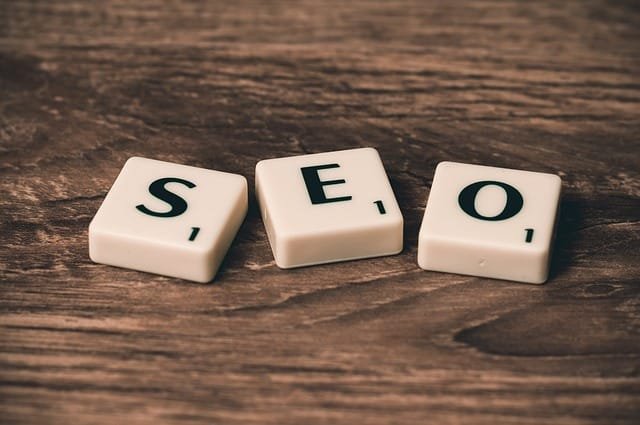The world of biotech is as complex as it is exciting. Every discovery, every piece of content, every online interaction contributes to a tapestry of innovation that’s pushing the boundaries of what’s possible. Yet, as biotech companies scale the peaks of innovation, they’re met with an equally formidable challenge – navigating the intricate landscape of SEO, especially in the light of Google’s Core Web Vitals.
Google’s Core Web Vitals & Biotech SEO
Google’s Core Web Vitals are a set of specific factors that Google considers important in a webpage’s overall user experience. They are signals, criteria that measure how users perceive the experience of interacting with a web page beyond its pure information value. For biotech companies, which often deal with complex, data-rich content, adapting to these criteria is more than a task – it’s an ongoing journey.
These vitals focus on three aspects of the user experience – loading performance, interactivity, and visual stability of a page. How quickly do the contents of a page load? How responsive is the page to user interactions? How stable is the content as it loads?
In the niche and complex world of biotech, where websites are often laden with dense information and intricate data, ensuring smooth user experience aligned with Google’s Core Web Vitals can often seem like threading a needle. Yet, it’s an essential pursuit. In a world where user experience is paramount, these metrics serve as a lighthouse, guiding content creators and web developers alike to offer digital experiences that are not just informative but engaging and user-friendly.
Loading Performance (LCP)
In a sector where cutting-edge discoveries and intricate data are the norms, the challenge is presenting this rich, detailed content without compromising the loading performance. Google’s Largest Contentful Paint (LCP) measures loading performance, with the ideal LCP falling within the first 2.5 seconds of the page starting to load.
Interactivity (FID)
The First Input Delay (FID) is another crucial metric, measuring the time from when a user first interacts with a page (clicks a link, taps on a button, etc.) to the time the browser is actually able to respond to that interaction. In the intricate, data-laden biotech web landscapes, where interactive charts, graphs, and other dynamic elements are commonplace, optimizing for FID becomes an art. It’s about ensuring that, amidst the depth and breadth of data, the user’s ability to interact with the content remains unhampered, that each click, each tap, yields a response that’s not just prompt, but seamlessly integrated into the rich tapestry of the user experience.
Visual Stability (CLS)
Cumulative Layout Shift (CLS) gauges visual stability. In layman’s terms, it quantifies how often users experience unexpected layout shifts—a factor of paramount significance in the world of biotech. Here, where content is often enriched with complex visual data, ensuring that these visual elements don’t shift unexpectedly is crucial. It’s about weaving a narrative of visual data that’s not just rich and insightful but anchored in stability, ensuring that the user’s journey through the complex corridors of biotech discoveries is as stable as it is enlightening.
The Dance Between Content & Performance
Diving deeper into LCP, for biotech companies, every piece of content – every data point, every graph, every interactive element – is a potential goldmine of engagement. But it also poses a challenge. How do you ensure that content richness doesn’t translate to sluggish load times? It’s a delicate dance between content depth and performance efficiency.
One approach is selective content prioritization, ensuring that as the page loads, the most critical elements are presented first, offering immediate value while less crucial elements follow. Techniques such as lazy loading, where specific elements are only loaded when they come into the viewer’s sightline, can also be pivotal.
Refining Interactivity
For FID, the focus shifts to the world of code execution. In biotech websites, where interactive elements are a cornerstone, JavaScript becomes a central character in the SEO narrative. The time it takes for JS to execute can profoundly impact FID. Optimizing the execution, ensuring that it’s as streamlined as possible, and that it doesn’t impede user interactions, is key.
But there’s an art to this. It’s about ensuring that the refinement of code execution doesn’t undercut the richness of interactive content. Here, strategies like breaking up long tasks, optimizing code execution timing, and leveraging browser’s idle periods become invaluable.
Nurturing Visual Stability
When it comes to CLS, biotech websites face a unique challenge. They are often replete with complex visual data—charts, graphs, interactive visualizations—that are as data-intensive as they are crucial for user engagement. Here, ensuring that these visual elements don’t shift unexpectedly as additional content loads is critical.
This can be achieved through several strategies. Allocating sufficient space for embedded elements and ads, ensuring that as they load, they don’t push content around, is one approach. Another is leveraging modern layout techniques, like CSS Grid and Flexbox, which offer enhanced control over the layout, ensuring stability amidst content richness.
Balancing Act
For biotech SEO, it’s a balancing act—ensuring that the depth of content, the richness of data, the complexity of interactive elements, all dovetail into a user experience that’s not just engaging but is streamlined and efficient. It’s about ensuring that the user, whether a seasoned researcher or a curious visitor, is not lost in the complexity but is guided, engaged, and enriched by it.
Intricate Strategies
In the intricate world of biotech SEO, adapting to Google’s Core Web Vitals requires a nuanced approach, one that seamlessly integrates technical optimization with content richness and user engagement. As we delve deeper, we explore bespoke strategies, each tailored to meet and exceed these pivotal performance metrics while enriching the user’s journey through the intricate, data-laden corridors of biotech content.
Tailoring LCP Strategies
Enhancing the Largest Contentful Paint requires an intricate dance between optimizing image load times and maintaining content quality. Image compression tools become invaluable, enabling biotech websites to present high-quality visual data without compromising load times. But it goes further. Implementing responsive image techniques ensures that images are optimized for various devices, enhancing mobile SEO.
Moreover, the choice of web fonts and their impact on LCP can’t be ignored. For biotech firms, where content presentation is pivotal, optimizing web font loading to ensure that text remains visible during the load, enhancing user experience, becomes a strategic priority.
Enhancing FID with Code Optimization
JavaScript, the linchpin of interactivity, comes under the spotlight as biotech firms seek to optimize First Input Delay. Code splitting emerges as a pivotal strategy, allowing websites to load only the necessary JS for each page, ensuring that the user’s first interaction is as swift as it is seamless.
In this scenario, server-side rendering (SSR) becomes a powerful ally. By rendering JS on the server, it ensures that the browser is delivered a fully rendered page, reducing the time to interactive and enhancing the FID metric.
Anchoring Visual Elements for CLS
In a world replete with visual data, maintaining layout stability becomes a strategic priority for biotech firms. Here, CSS layout techniques offer an enhanced control level, ensuring that as each rich, data-laden element loads, the layout remains unshifted, the user’s journey undisturbed.
Preloading key resources, another nuanced strategy, ensures that crucial visual elements, especially those above the fold, are prioritized. It ensures that as the user lands on a biotech webpage, they are immediately greeted with rich, engaging content, even as additional elements load in the background.
The SEO Audit: A Biotech Narrative
An SEO audit, tailored for the unique demands of biotech content, emerges as a foundational element. It’s not just about identifying gaps but understanding how these gaps interact with the complex, nuanced world of biotech content. Tools like Google’s Lighthouse become pivotal, offering insights not just into performance but accessibility, best practices, and SEO.

Related: Check out our free SEO suite

AI and Machine Learning in Biotech SEO
As the digital landscape continues to evolve, the integration of Artificial Intelligence (AI) and Machine Learning (ML) in SEO strategies for biotech companies is no longer a futuristic concept but a present-day necessity. These technologies are redefining how biotech firms optimize their online presence, making content not only accessible but also highly personalized and engaging.
AI-Powered Personalization
In the realm of biotech, where content is often complex and highly specialized, AI steps in to personalize user experiences. Machine learning algorithms analyze user behavior, preferences, and interaction with content. They predict and understand the specific needs of various user segments, from researchers and professionals to the general public, and tailor content presentation accordingly.
Imagine a biotech website that adapts in real-time, presenting personalized content layouts, customized data visualizations, and AI-generated insights tailored to the user’s specific interests, expertise level, and even the device they are using. It enhances engagement, reduces bounce rates, and drives deeper interactions with the content.
Machine Learning for User Engagement
SEO is not just about attracting users to the website but ensuring they stay, engage, and derive value. ML algorithms can analyze complex patterns of user interaction, identifying what type of content appeals to different user segments, how they consume it, and their engagement journey. It allows biotech firms to refine content strategies, optimizing for maximum engagement and value delivery.
AI in Content Creation
The creation of high-value, SEO-optimized content is another frontier where AI is making significant inroads. AI tools like GPT-3 are enabling biotech companies to generate highly informative, engaging, and SEO-friendly content at scale. These tools are equipped to understand and generate content that resonates with specific SEO parameters, enhancing visibility and rankings.
Predictive Analytics for SEO Strategy
Predictive analytics, powered by AI, is becoming a cornerstone in formulating SEO strategies for biotech companies. These analytics provide insights into future trends, user behavior patterns, and potential algorithm changes. It empowers biotech firms to be proactive, optimizing their content and technical SEO elements in anticipation of future trends, staying ahead of the curve.
Ethical Considerations and User Privacy
While AI and ML are driving innovations, ethical considerations, especially in the sensitive field of biotech, are paramount. Ensuring that AI-driven personalization and content optimization adhere to stringent privacy and ethical standards is crucial. It’s about balancing personalization with privacy, ensuring that user data is protected and used ethically.
Final Thoughts
As biotech firms venture deeper into the integration of AI and ML in their SEO strategies, the landscape of content optimization, user engagement, and online visibility is undergoing a transformation. It’s a journey of continuous learning and adaptation, where the amalgamation of biotech innovation and AI-driven SEO strategies are not just enhancing online visibility but are set to redefine user engagement, content value, and the overall digital experience in the biotech sector.
READ NEXT:
- How Mobile SEO Impacts Biotech Websites
- Content Marketing and SEO Budget Synergy for Startup ROI
- Schema Markup for Medical and Scientific Content
- How to Beat Big Brands in SEO as a Small Travel Agency
- Keyword Research for Startup YouTube Channel: Video SEO Strategies





















Comments are closed.